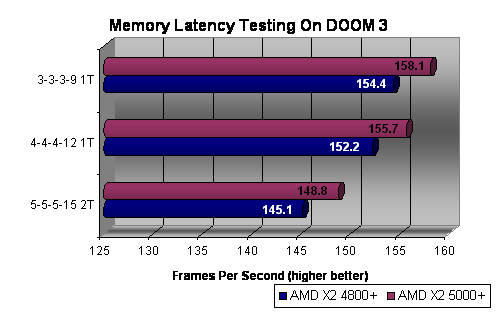http://www.anandtech.com/cpuchipsets/showdoc.aspx?i=2771&p=1
I know what chip my next cpu will be based on
I know what chip my next cpu will be based on
Bajzel said:The performance difference is not as large as was shown in the Intel controlled preview. 20%
from a 2.9Ghz conroe vs 2.8Ghz athlon fx as opposed to almost 40% from a 2.66 conroe versus a 2.8 Afx. All AMD needs to do is drop their prices and they will still remain very competitive with the Conroe. It's amazing how a now old a64 design still keeps up with intels latest.
Xentropy said:Some people have pointed out that Anand used 5-5-5-12 memory timings for the AMD system, which is fairly high latency. Those benchmark numbers may still change a bit when/if some other people get some Conroe's to test.
Cmon HardOCP, lets see some reviews.
radeonic2 said:I'm not to sure about that.. did you see the memory latency they have?
Only a tad short of amd.
Truely amazing imo.
They don't have all the draw backs of an onboard MC and they still have awesome latecy.
No changing sockets for memory type changes and no "half assed" (tech report) ddr2 800 implementation for all but the highest clocked chips.
I was truely shocked when i saw amd didn't run ddr2 800 at full speed for all speed grades and transistors used up by it.
Also digit-life shows amd's ddr1 platform is showing better memory performance in some of their tests, and not be a small margin is a few, also intel's P4 is showing better peformance as well.
http://www.digit-life.com/articles2/mainboard/ddr2-800-am2.html
What I said was amazing was the memory latency.swaaye said:It's the same with DDR1 on K8. You always run a few MHz below spec because of what looks like "math precision" on the dividers I'd guess. For example, a K8 running PC2700 runs the RAM at like 160 instead of 167. It doesn't matter in the least if you're an overclocker, and the performance difference is probably so negligible otherwise that it doesn't matter.
I'm personally not at all surprised with what Conroe can do. It's a rethinking of Pentium M without the need to run super low power. They couldn't really lose, IMO.
AMD should be ashamed for not having reworked their core for years, essentially. The DDR2 K8 is basically the same as what arrived in 2002. And, K8 is basically an Athlon from 1999 with some tweaks and AMD64. All that really makes it faster is the memory controller. It's more like a Pentium M, which is a Pentium Pro with tweaks. And Pentium M / Core 1 can keep up with it in most real-world apps (and use a ton less power).
Conroe is truly a new design with tons of bottleneck breaking going on.
Well, it seems rather likely that the whole reason that Intel has changed their platform so many times in recent years is that they want to maximise their sales, and that includes chipset sales. This makes me really hope that AMD continues to not supply Athlon chipsets.SugarCoat said:Actually the Bad Axe boards (a 975X revision that just started) seems to be the first decent chipset intel has put out for awhile. Xbit is reporting that because it will support Conroe it can theoretically support the first run of Quad cores in 2007 due to having the same power requirments. Although Intel may screw people which they have been known to do like when they introduced 1066FSB and said the 925 was incompatable which was a lie. If they try to push DDR3 adoption by early 2007 that may complicate things as well.
No, it's because the divider must be an integer. Example: With 2600 MHz CPU frequency, the lowest useable memory divider is 7, which gives 371 MHz memory frequency, quite a bit lower than 400.swaaye said:It's the same with DDR1 on K8. You always run a few MHz below spec because of what looks like "math precision" on the dividers I'd guess. For example, a K8 running PC2700 runs the RAM at like 160 instead of 167. It doesn't matter in the least if you're an overclocker, and the performance difference is probably so negligible otherwise that it doesn't matter.
SugarCoat said:Latency timings dont do much at all to impact AMD 64 chips performance....it really doesnt matter because of the onboard mem controller. Its only a real problem for Intel chips to try to keep good timings.
Shogun said:

i think the point of the comparison in this thread with that graph , IS the differance between 1T and 2T. the 333 and the 444 is to show how little the cas/ras ect effects this compared to the 1T/2TBlazkowicz_ said:I didn't notice the 5-5-5-15 numbers were run at 2T, would have made more sense to run at 1T and the picture would have been less dramatic (while 4-4-4-12 probably still being the sweet spot)
EasyRaider said:No, it's because the divider must be an integer.
It's true for all current K8.darkblu said:you mean for those two particular cpu's from the article or in general? cause in general that's not true - i'm running a couple of tualatins at home at x10.5 fsb speed.
